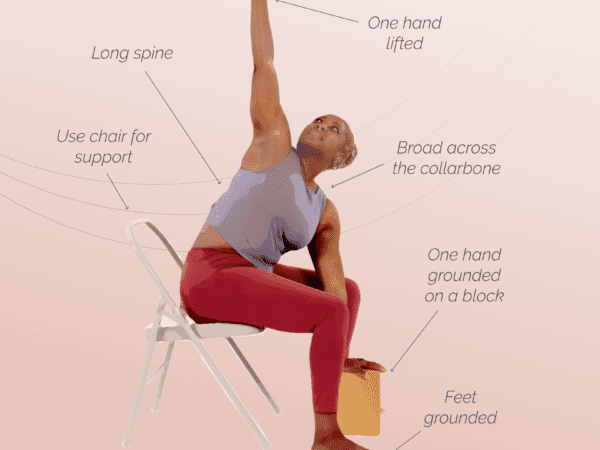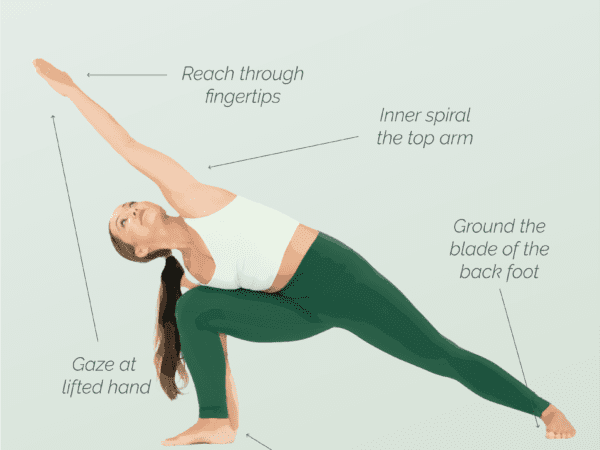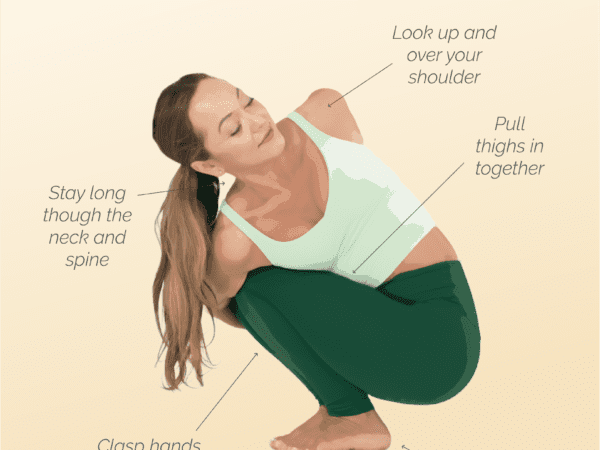In the heart of a forest, a yogi bends backward, forming an astonishing arc. Have you ever wondered how they accomplished such a feat?
Scorpion pose has intrigued yogis for centuries with its intoxicating blend of strength, balance, and grace. But what does it really entail?
Mastering the vrschikasana, or scorpion pose, is a journey through physical intricacy and mental focus. This arm balance is a testament to the human body’s amazing capabilities.
Understanding Scorpion Pose
Vrschikasana, or scorpion pose, is an advanced yoga asana that symbolizes the pinnacle of a yogi’s quest for balance and serenity amidst physical complexity. Its execution requires strength and poise, commanding complete awareness and harmony between mind and body. The pose reflects the scorpion with its tail arched over its back, a metaphor for the transformation and control one can achieve through dedicated practice.
Achieving this intricate asana is a gradual process that unfolds with patience and persistent dedication. It is a practice that extends beyond the mat, encapsulating the essence of yoga’s transformative power. For those willing to embrace its challenge, scorpion pose is not merely a physical achievement, but a spiritual milestone—a marker of inner strength and the embodiment of yoga’s profound adaptability.
Origins and Benefits
The scorpion pose, known as vrschikasana in Sanskrit, traces its roots to ancient yoga traditions, embracing both physical prowess and spiritual depth.
In vrschikasana, the body mirrors a scorpion’s raised tail, symbolizing alertness and readiness to strike with precision.
It bestows a plenitude of benefits, including improved balance, enhanced spine flexibility, and invigoration of the body’s energy centers, fostering overall vitality.
Regular practice cultivates mental fortitude, promotes concentration, and harmonizes the inner self with the physical form, embodying yoga’s intricate fusion of mind and body.
Anatomy of the Scorpion Pose
Vrschikasana is a deep backbend that engages the entire body, requiring both strength and flexibility. It targets your spine’s extension capacity, as flexibility across the thoracic and lumbar regions is essential to achieve the full expression of the pose. Because it is a handstands posture, strong engagement of the shoulders and arms is crucial, as they form the foundation of the pose and bear the bulk of the body’s weight.
Balancing on the hands, vrschikasana activates the core muscles, including the transversus abdominis and obliques, to stabilize the torso. Simultaneously, it stretches the hip flexors and quadriceps as the feet draw towards the head. This integration of core stability with hip flexibility underscores the pose’s complexity and reinforces the necessity for comprehensive conditioning.
Furthermore, scorpion pose demands the recruitment of several muscle groups. For instance, the deltoids, triceps, and pectoralis major provide support and strength to sustain the arched position. Meanwhile, the proprioceptive elements come into play, enhancing the body’s spatial awareness as the practitioner navigates this inverted stance.
Additionally, the asana’s inversion element challenges the vestibular system, improving balance and focus. The neck muscles, specifically the sternocleidomastoid and upper trapezius, assist in head positioning. It’s critical for the practitioner to engage these muscles mindfully to prevent strain, maintaining alignment and integrity throughout the neck and spine.
Practicing this asana hones the coordination between muscle groups, cultivating control and grace. It’s a profound posture, reflecting the dynamic interplay between strength and suppleness that defines the yogic journey.
Preparatory Practices
Prior to attempting scorpion pose, it’s imperative to warm up the spine with gentler backbends such as cobra or upward-facing dog. This process incrementally introduces flexibility and prepares the body for deeper arching movements.
An adept proficiency in handstands provides a stable foundation for transitioning into scorpion pose. Strengthening shoulders, arms, and core, through poses like dolphin and plank, is critical to sustaining the inversions and balances that scorpion pose entails.
Finally, harnessing mental focus and breath control through pranayama practices will support the concentration and calm required for executing vrischikasana, the formal name for Scorpion Pose.
Core Strengthening
In scorpion pose, core strength is essential to stabilize and support the entire body as it inverts and balances.
- Plank poses to cultivate endurance and tighten the abdominal muscles
- Boat pose (Navasana) for reinforcing the deep core muscles and improving balance
- Leg raises to enhance control over the lower abdominal region
- Side planks to engage and strengthen the obliques
These exercises condition the body, making advanced postures more attainable.
A strong core translates to better control when lifting into and maintaining the scorpion pose.
Incorporate these drills into your practice regularly to boost your core power, ensuring a stable and impressive vrischikasana.
Spine Flexibility
In vrischikasana, a supple spine is a linchpin for success, allowing the back to arch gracefully into position.
For scorpion pose, significant spine flexibility is required to create the dramatic curvature emblematic of this asana. Starting with gentle backbends gradually expands your range of motion, ensuring that each vertebra is prepared to contribute to the final pose. Regular practice of cobra pose (bhujangasana) and upward-facing dog (urdhva mukha svanasana) can serve as foundational work for developing the necessary spinal flexibility.
In addition, incorporating poses like camel (ustrasana) and bow (dhanurasana) into your routine can deepen thoracic and lumbar flexibility. These asanas encourage the spine to extend backward with intent, mobilizing each segment sequentially and conditioning the muscles for that quintessential scorpion’s tail lift.
To maintain spine health while increasing flexibility, it is paramount to align and lengthen the spine within each practice session. Practicing forward folds and twists, such as child’s pose (balasana) and seated twist (ardha matsyendrasana), can counterbalance the intense extension and provide relief and recalibration. This balance helps prevent injury and ensures the spine remains supple and responsive to the intense demands of vrischikasana.
Shoulder Mobility
Optimal shoulder flexibility is essential.
The shoulders play a pivotal role in stabilizing and lifting the body into vrischikasana, or scorpion pose. Enhanced shoulder mobility is acquired through dedicated practice of asanas such as dolphin pose and eagle pose (garudasana). Moreover, focus on the rotator cuff muscles and diligent stretching can expand the range of motion necessary for the scorpion pose. Mastery of shoulder mobility leads directly to improved posture and ease in asana.
Reinforcing shoulder strength is equally critical.
Motion without stability can lead to injuries – a balance we must constantly seek. In building a scorpion pose foundation, include shoulder-strengthening asanas like handstand to ensure the shoulders are not only flexible but also robust and capable of sustaining the body’s weight.
The journey toward optimal shoulder mobility combines stretching with strengthening. A well-rounded asana repertoire, possibly including the integration of props, will efficiently develop the shoulder flexibility and strength pivotal to executing scorpion pose with finesse.
Step-by-Step Execution
Embarking on the scorpion pose (vrischikasana) requires a solid blend of strength, flexibility, and balance. Here’s a tutorial to help you get started with this yoga pose.
Begin by entering handstand, with your hands beneath your shoulders and your body stacked in a vertical line.
Engage your core and maintain a steady breath as you start to arch your back gently, guiding your feet towards your head. Gradually bend your knees, drawing your toes closer to the crown, visualizing the tail of a scorpion.
Bring your chest and head forward between your shoulders and lift your head to meet your feet.
It’s imperative to move with control and mindfulness, protecting your spine and neck by relying on the power of your shoulders and thoracic region. Over time, with patience and persistent practice, your feet will hover just above your head, capturing the essence of this elegant and empowering asana.
Foundational Positioning
Before attempting the Scorpion Pose, establish a strong base with the Forearm Stand.
- Place your hands on the mat shoulder-width apart.
- Keep your core engaged or a strong engaged core will help you maintain control in this pose and prevent injuries.
- Elevate your hips and walk your feet in, stacking your hips over your shoulders for stability.
- Lift one leg up to the sky to find balance before raising the other to enter a handstand.
A handstand is the precursor to the full expression of the scorpion.
Once stable in your handstand, focus on engaging the core muscles to support the spine.
Balancing and Lifting
Engage your core to maintain steadiness.
As you balance, visualize your spine lengthening. Importantly, the lifting action should come from engaging the core and glutes, echoing the support needed from your upper body. This engagement forms a partnership with gravity, allowing you to maintain a stable foundation while exploring the curvature required for scorpion pose. Fluidity in movement is key to transitioning into this challenging asana.
Flexibility is just as crucial as strength.
Remember, scorpion pose is a dance of control. As you refine your balance, concentrate on lifting through your torso and legs, using each inhalation to extend further and each exhalation to deepen the pose. Your body becomes an artistic expression of controlled power and grace, a metaphor for the scorpion’s tail poised in motion.
Gradually introduce a bend in your back.
As you practice, invite a gentle bend in your back, visualizing the attainment of a perfect arc. This arc is akin to an opening flower, revealing the inner strength and flexibility that have been cultivated through dedicated practice, symbolizing a balance not just of the body, but of the spirit within.
Perfecting the Scorpion Curve
The journey to mastering the Scorpion curve demands patience and acute body awareness, ensuring that every transition feels natural and unforced. This deliberate approach reduces the risk of injury.
Engage your core muscles to support your spine.
To protect your lumbar area and enhance the curvature, focus on engaging your transverse abdominis. This muscle acts as a corset, wrapping around your spine for superior support.
Visualize your spine as a string of pearls, each vertebra contributing to the supple arch of the Scorpion’s tail. Your thoracic spine should bend gently, as you broaden across your chest, encouraging the natural curvature without strain. In due course, that visualization turns to reality, with the neck and spine aligning in harmonious curvature, transcending mere flexibility into a sculpture of poise and elegance.
And as you breathe life into this demanding asana, remember the importance of a progressive and compassionate approach. Welcome the incremental changes with each practice, and embrace the ebbs and flows that come with sculpting the scorpion curve. It’s an intricate balance of strength, flexibility, and control that translates into this mesmerizing pose.
Safety and Modifications
When endeavoring to achieve the scorpion pose, a cornerstone consideration must be safety. This advanced asana demands not only flexibility but also significant strength and balance. If you’re just beginning to explore this pose, or if full expression remains a work in progress, consider utilizing props or modifications. A wall can serve as a stabilizing companion, while cushioning or yoga blocks can be positioned strategically for support.
The key to avoiding injury is listening to your body; if you detect any sharp pain or discomfort, particularly in the lower back or shoulders, it’s imperative to ease out of the position. Approach vrischikasana with patience, progressively building the necessary foundation, and always prioritize alignment over depth.
Avoiding Common Mistakes
When attempting vrischikasana, overemphasis on back bending can lead to undue strain. Cultivate a sense of lift through the thoracic spine instead of compressing the lumbar.
In the zeal to achieve the scorpion pose, there’s a tendency to neglect the engagement of the legs and feet. Active leg and core engagement is vital for stabilizing the pose and preventing undue pressure on the shoulders and spine. Overarching the back and disregard for proper alignment can compromise your structure, potentially leading to discomfort or injury over time. Hence, it is imperative to distribute the bend evenly across the entire spine.
Remember that achieving the scorpion’s sting – or the curved position of the legs – requires more than just spinal flexibility. Prioritizing hip flexibility and strength is crucial to safely elevate your feet towards your head. Ignoring the hips can result in a pose that lacks integrity and sustainability.
Finally, beware of becoming fixated on reaching your head with your feet. This objective, while tempting, can make you rush the process, bypassing the necessary core engagement, shoulder stability, and spinal alignment. Instead, progress gradually, ensuring each segment of the spine articulates smoothly, and the shoulders remain stable and engaged. Rushing can not only compromise form but also the safety and overall benefits of the asana.
In conclusion, mastering the scorpion pose can be a challenging yet rewarding journey for yoga enthusiasts. By following the step-by-step instructions and practicing regularly, you can build strength, flexibility, and balance in your body and mind. Remember to listen to your body, take it slow, and always prioritize safety during your practice. With dedication and perseverance, you can achieve the Scorpion Pose and experience the many physical and mental benefits it offers. So, roll out your mat, embrace the challenge, and let the Scorpion Pose take your yoga practice to new heights. Namaste!
Are you looking for more guidance on your yoga journey? Sign up for Omstars to get access to thousands of yoga classes in the comfort of your own home. Click here to start your subscription.









